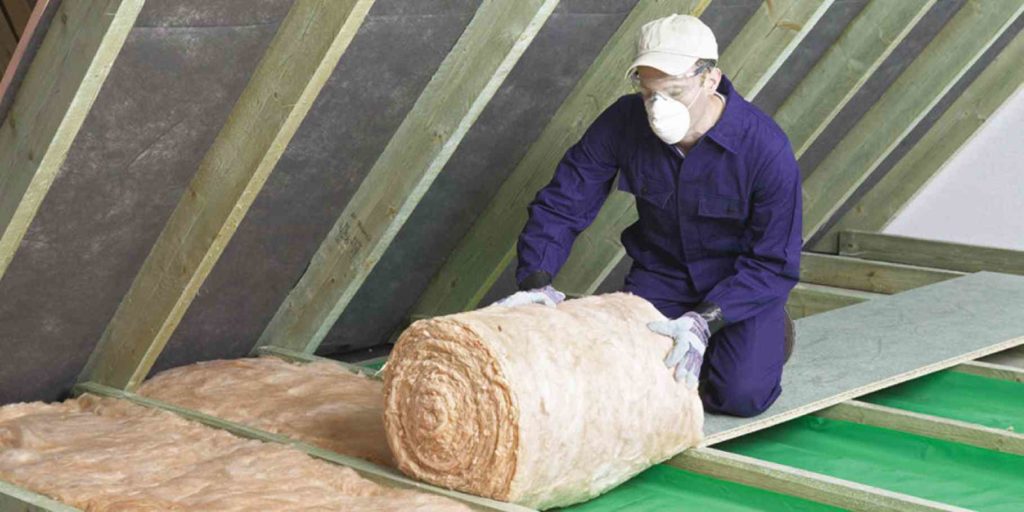Is your home cancer-free?

Source of Fiberglass Insulation: https://www.popularmechanics. com/home/how-to/a17349/fiberglass-insulation-tips/
There is an observable increase in medical centers nowadays as big names in healthcare clinics are now being found in mall outlets especially in Metro Manila.
Such presence denotes either that more people are sick or more people are concerned with their health and would go to said clinics for check ups and consultations. Prevention is better than cure, most of us would say, but are we doing enough?
Securing our personal spaces where we spend most of our time in would be one of the most important things we should consider.
These spaces are our refuge from chaos and pollution. It is right to keep it free from any cancer-causing elements.
While it is impossible to eliminate these substances completely, it is still worthwhile to keep them at minimum.
These carcinogens are found in the chemicals used in today’s products especially in building materials.
Certain innovations in material design and properties have improved over the years by altering their chemical properties to answer the modern man’s needs for heat insulation, fire protection, waterproofing, and even aesthetic applications.
We look at some of these materials and identify the potential risks in its use.
Asbestos
Because of its fireproof and insulating properties, many houses in the past made use of this material (roofing, insulation and ceiling materials) until studies have shown that weathered asbestos releases particles in the air that cause respiratory problems which may progress to lung cancer. (Source: www.asbestosmanagement.co.nz)
Arsenic
This is usually found in pressure-treated wood that are placed outdoors and exposed to weather. Arsenic is used to treat wood and protect them from bacteria and fungi.
Because it is exposed to weather, this chemical is absorbed by the ground and is transmitted to humans through the skin.
Known harmful effects include cancers of the nasal passage, lungs, bladder, skin and kidney.
Phthalates in PVC
These are also called “plasticizers” and are additives used to make PVC more elastic. They are found in carpet backing, acoustical tile ceilings, resilient flooring, waterproofing and wall coverings. Some certain types of phthalates alter human hormones. (Source: www.recyclenow.com)
Volatile organic compounds
VOCs are commonly found in solvents, paints and coatings. A specific example is formaldehyde, a chemical also found in engineered wood, hardwood plywood, particle boards and medium density fiberboards.
It is one of the chemicals in adhesives used to press fibers of wood together. Its fumes are released through the air over time. When exposed at elevated levels it causes irritation and problems to the eyes, throat and the lungs. (Source: www.houzz.com)
Fiberglass insulation
While very effective in thermal protection, these materials also contain microscopic glass particles that are released to the air and enter our lungs through our noses.
Improper handling can cause tiny cuts in the handler’s arms and body and worse, if done without protection may also damage the eyes. The said glass particles are very dangerous as they may end up entering the bloodstream. (Source: www.popularmechanics.com)
Mercury
These are found in some oil-based stains and as an element in mercury lamps and metal halide lamps which are high-discharge lamps. While these are harmless in original and undisturbed state, improper discharge and storage may release the mercury content and contaminate a water source. (Source: www.periodictable.com)
Lead
This can be found in some paints, plumbing fixtures, fittings and soldered pipes. While it has been banned for several decades already, it is still important to check whether the faucets and paint materials we purchase nowadays have lead content. This is a toxic material that causes damage to internal organs like the kidney and the nervous system.
A list of known and potential carcinogens can be found at www.cancer.org/cancer/cancer-causes/general-info/known-and-probable-human-carcinogens.html
Mitigation
While some of the enumerated materials above still lack evidence as to the level of carcinogenicity that they have, they still pose an equal amount of threat. As consumers, we should actively participate in demanding safer and more environment-friendly building materials and products from manufacturers and suppliers.
Remember that anything harmful to humans are also harmful to the environment. In working on home renovation and construction, we can safeguard these concerns through the following ways:
Request for the material safety data sheets and chemical properties of the building materials you will purchase. Identify with the list of known and potential carcinogens, harmful chemicals present.
Request for a company profile from suppliers, material applicators and installers, those with notable certifications ensure they have satisfied environmental compliance regulations.
Identify a qualified and licensed contractor to ensure that all works are done as per the procedural requirements of the products and will exercise proper disposal of its excesses.
Upon completion of the house, allow at least 48 hours for any fumes to be expelled from the interiors. If possible, provide mechanical ventilation to speed up the exhaustion.
Lastly, if these all seem Greek to you, work with professionals in specifying products for your home.
Lung, trachea and bronchial cancers are the 5th leading causes of death in the world in 2015 according to the World Health Organization. It is time to make wiser choices on the substances we surround ourselves with.
If we can be more holistic with our approach to prevention, then maybe we can lessen the global effects of the widespread use of construction materials with carcinogens.
The author is the principal architect of SpecsConsult, which specializes in design and technical specifications.